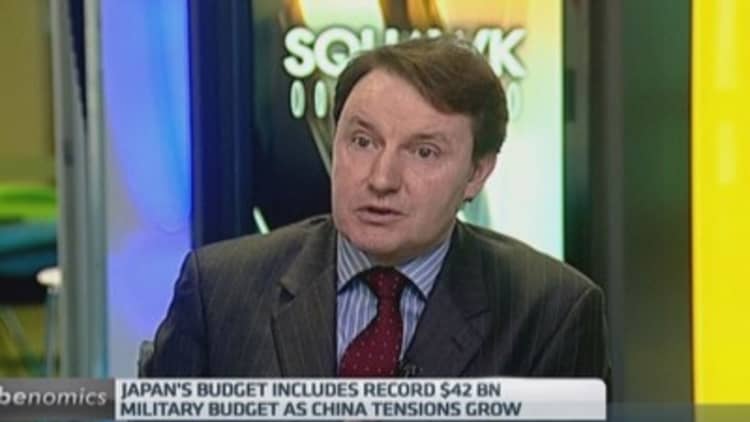The Bank of Japan's (BOJ) massive asset purchase program has put government bond yields on a relentless slide into negative territory, and while some analysts insist a U.S. rate hike will reverse the trend later this year, others expect a slide into unchartered territory.
"Yields have fallen so low that analysts no longer have any historical risk models to fall back on," said Shinichi Tamura, Barclays' Japan bank analyst, noting that rates strategists are going on blind faith that yields will stop falling.
Japan's short-term yields, of less than three years, turned negative last year, and last week the 5-year Japanese government bond (JGB) slipped close to zero several times. As of Monday morning Asian time, the yield was quoted at 0.018 percent, up from 0.005 basis points after market close on Thursday.
Most worrying, Tamura said, is the flattening of the yield curve with long-term government bond yields also on a relentless downward trend. On Monday morning, the 10-year was quoted at 0.242 basis points -- above the historical low of 0.228 percent hit early last Friday -- and the 30-year is at 1.105 percent.
"Bond investors are uncomfortable with what they see as an abnormal situation," said Mana Nakazora, chief credit analyst at BNP Paribas. If the current levels hold, the price of new corporate bonds will be benchmarked against negative government bond yields. So, "they can't see where they are going to secure returns after 2015 and beyond, or when the BOJ will end the current round of quantitative easing and stop buying up JGBs."

The BOJ, in an effort to achieve its 2 percent inflation target, surprised markets on October 31 by expanding JGB purchases to 80 trillion yen from 50 trillion yen, and extending the duration of bonds it holds to about 7-10 years.
The first so-called policy 'bazooka', shot in April 2013, sent the benchmark 10-year yield tumbling to 0.451 percent from 0.835 percent at the beginning of the year; the yield recovered to 0.935 percent by late May but has been on a steady downward spiral since – when October's easing was unleashed the yield was still at 0.463 percent, double current levels.
Read MoreJapan Inc says goodbye to going bust in 2014
Japan's banking sector, which moves in tandem with long-term yields, was one of the earliest victims, with banking stocks underperforming the broader market. The Topix bank index has shed 9.79 percent from its recent high on December 8, 2014, while the was down 6.64 percent over the same period and the broader Topix has fallen 6.22 percent.
Central banks the only hope
Some analysts believe the Federal Reserve can stop this downward trend in yields.
"JGB yields will start rising when the Fed raises its rates," said Daiwa Securities' senior JGB strategist Keiko Onogi, citing a historical precedent: in June 2003, JGB yields were falling and the yield curve was flattening until the Fed hiked rates, she said. The Fed is widely expected to hike rates sometime in the middle of this year.
"Maybe the European Central Bank's expected quantitative easing this week will reverse the trend - but it's difficult to see where the floor is," said Barclays Tamura.
Even BOJ action cannot be ruled out.
"It remains to be seen how the BOJ itself will react to the falling yields – it could increase resistance to further monetary easing," said Capital Economics' Marcel Thieliant. However, he maintains his forecast that the BOJ will ease again, as early as in April.
Waiting for a catalyst
In the meantime, "everyone is waiting for a catalyst that will jolt JGB yields," said Barclays Tamura.
Reducing Japan's huge debt burden is the key, said BNP Paribas' Nakazora. The government looks set to meet its target of halving the primary balance in the fiscal year starting in April 2015. But, if the government cannot put the economy back on a growth path and at least show a roadmap to achieving a budget surplus by 2020, there's a risk that broad selling of Japanese assets could set in, she said.
Still, the collapse in oil prices should help the economy and buy the government some time, according to Nakazora, dismissing any immediate risk of a collapse in Japanese asset prices. After all, she said, "95 percent of JGBs are held by Japanese investors – and that provides the government and the BOJ with some additional room to breathe."

